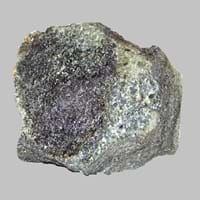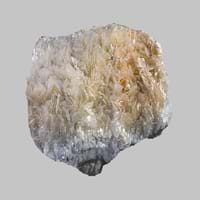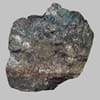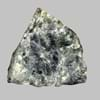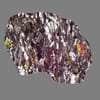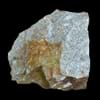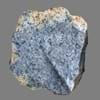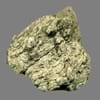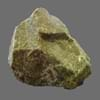Amphibolite and Talc carbonate
Definition
Definition
Amphibolite can be defined as a granular metamorphic rock which mainly consist of hornblende and plagioclase
Talc carbonate is nothing but a rock sequence or a mineral composition found in metamorphic ultramafic rocks.
History
Origin
Unknown
China, USA, Middle east
Discoverer
Alexandre Brongniart
Unknown
Etymology
From Amphibole + -ite
From medieval Latin, talcum
Class
Metamorphic Rocks
Metamorphic Rocks
Sub-Class
Durable Rock, Hard Rock
Durable Rock, Soft Rock
Family
Group
Not Applicable
Not Applicable
Other Categories
Coarse Grained Rock, Medium Grained Rock, Opaque Rock
Fine Grained Rock, Opaque Rock
Texture
Texture
Banded, Foliated, Massive
Very Soft
Color
Black, Brown, Green, Grey
Colourless, Grey, White
Maintenance
Less
Less
Durability
Durable
Durable
Water Resistant
Yes
Yes
Scratch Resistant
Yes
Yes
Stain Resistant
Yes
No
Wind Resistant
No
No
Acid Resistant
Yes
No
Appearance
Foliated
Soft
Uses
Architecture
Interior Uses
Countertops, Decorative Aggregates, Entryways, Floor Tiles, Flooring, Homes, Hotels, Kitchens
Decorative Aggregates, Interior Decoration
Exterior Uses
As Building Stone, As Facing Stone, Paving Stone, Office Buildings
Garden Decoration
Other Architectural Uses
Curbing
Powder
Industry
Construction Industry
As Dimension Stone, Building houses or walls, Cobblestones, Construction Aggregate, for Road Aggregate, Landscaping, Production of Glass and Ceramics, Roadstone
Source of calcium
Medical Industry
Not Yet Used
Taken as a Supplement for Calcium or Magnesium
Antiquity Uses
Artifacts, Sculpture, Small Figurines
Artifacts, Jewellery, Monuments, Sculpture, Small Figurines
Other Uses
Commercial Uses
Cemetery Markers, Commemorative Tablets, Creating Artwork
Manufacturing of baby powder
Types
Types
Hornblendite
Not Available
Features
Clasts are smooth to touch, Matrix variable, Surfaces are often shiny
Easily splits into thin plates, Generally rough to touch, Host Rock for Lead
Archaeological Significance
Monuments
Used
Used
Famous Monuments
Data Not Available
Data Not Available
Sculpture
Used
Used
Famous Sculptures
Data Not Available
Data Not Available
Pictographs
Not Used
Used
Petroglyphs
Not Used
Not Used
Figurines
Used
Used
Fossils
Absent
Absent
Formation
Formation
Amphibolite is a coarse-grained metamorphic rock which forms by metamorphism of mafic igneous rocks like basalt and gabbro or from the metamorphism of clay-rich sedimentary rocks like marl or graywacke.
Due to change in environmental conditions, rocks are heated and pressurized deep inside the Earth's surface. Talc Carbonate is formed from the extreme heat caused by magma or by the intense collisions and friction of tectonic plates.
Composition
Mineral Content
Amphibole, Andalusite, Biotite, Calcite, Epidote, Garnet, Hornblade, Kyanite, Magnetite, Olivine, Plagioclase, Pyroxene, Staurolite, Wollastonite
Carbonate, Chlorite, Magnesium
Compound Content
Aluminium Oxide, CaO, Iron(III) Oxide, FeO, Potassium Oxide, MgO, MnO, Sodium Oxide, Phosphorus Pentoxide, Silicon Dioxide, Titanium Dioxide
CaO, Carbon Dioxide, MgO
Transformation
Metamorphism
No
Yes
Types of Metamorphism
Not Applicable
Burial Metamorphism, Cataclastic Metamorphism, Contact Metamorphism, Hydrothermal Metamorphism, Impact Metamorphism
Weathering
Yes
No
Types of Weathering
Chemical Weathering, Mechanical Weathering
Not Applicable
Erosion
Yes
No
Types of Erosion
Chemical Erosion, Glacier Erosion, Sea Erosion, Wind Erosion
Not Applicable
Properties
Physical Properties
Hardness
6-7
1-2
Grain Size
Medium to Coarse Grained
Fine Grained
Fracture
Irregular to Conchoidal
Flat
Streak
White to Grey
White
Porosity
Less Porous
Less Porous
Luster
Vitreous to Dull
Pearly
Compressive Strength
Not Available
250.00 N/mm2
4
Cleavage
Irregular
Perfect
Toughness
2.3
1
Specific Gravity
2.5
2.86
Transparency
Opaque
Translucent
Density
2.85-3.07 g/cm3
2.8-2.9 g/cm3
Thermal Properties
Specific Heat Capacity
Not Available
0.92 kJ/Kg K
10
Resistance
Heat Resistant, Pressure Resistant, Wear Resistant
Heat Resistant, Wear Resistant
Reserves
Deposits in Eastern Continents
Asia
Russia, Turkey
Not Yet Found
Africa
Burundi, Djibouti, Eritrea, Ethiopia, Kenya, Madagascar, Rwanda, Somalia, South Africa, Sudan, Tanzania, Uganda
Ethiopia, Ghana, Western Africa
Europe
Germany, Greece, Iceland, Norway, Poland
England
Others
Not Yet Found
Not Yet Found
Deposits in Western Continents
North America
Canada, USA
Canada, USA
South America
Brazil
Argentina, Bolivia, Uruguay
Deposits in Oceania Continent
Australia
South Australia, Western Australia
Central Australia, South Australia, Western Australia
All about Amphibolite and Talc carbonate Properties
Know all about Amphibolite and Talc carbonate properties here. All properties of rocks are important as they define the type of rock and its application. Amphibolite and Talc carbonate belong to Metamorphic Rocks.Texture of Amphibolite is Banded, Foliated, Massive whereas that of Talc carbonate is Very Soft. Amphibolite appears Foliated and Talc carbonate appears Soft. The luster of Amphibolite is vitreous to dull while that of Talc carbonate is pearly. Amphibolite is available in black, brown, green, grey colors whereas Talc carbonate is available in colourless, grey, white colors. The commercial uses of Amphibolite are cemetery markers, commemorative tablets, creating artwork and that of Talc carbonate are manufacturing of baby powder.
|
||
|
||
|
